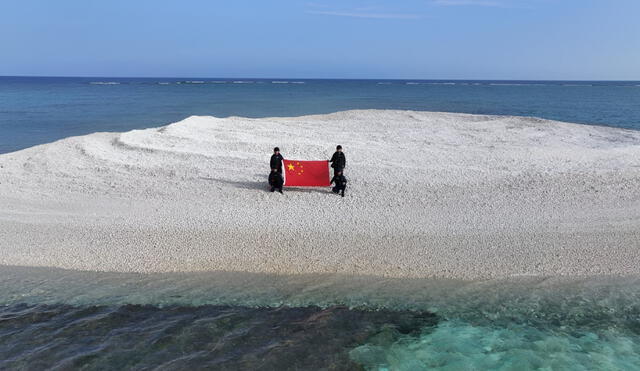China seizes disputed sandbank in South China Sea, escalating tensions with Philippines
As China tightens its grip on a tiny sandbank, tensions ripple across the South China Sea — with global powers now watching closely and the risk of conflict rising by the day.

The China Coast Guard landed on Sandy Cay, a small sandbank in the Spratly Islands, raising the Chinese flag and declaring "maritime control and sovereign jurisdiction." This marked China's first formal occupation of a previously unoccupied land feature in the area in years. The move has escalated tensions with the Philippines, especially as it coincided with upcoming joint U.S.-Philippine military exercises nearby.
Despite its modest size of approximately 200 square meters, Sandy Cay holds strategic significance. Under international law, its classification could grant a 12-nautical-mile territorial sea, potentially overlapping with waters around Thitu Island, the Philippines' most significant military outpost in the region. Control over Sandy Cay could thus impact territorial claims and maritime rights in the contested South China Sea.
Philippines strengthens South China Sea presence amid rising tensions with China
In response to China's actions, the Philippines deployed navy, coastguard, and maritime police personnel to Sandy Cay and neighboring sandbanks, asserting its sovereignty by raising the national flag. The White House expressed deep concern over China's move, stating that such actions threaten regional stability and violate international law. The 2016 Hague ruling had previously deemed China's expansive claims in the South China Sea inconsistent with international law.
While no direct confrontations have been reported, Chinese coastguard and maritime militia vessels continue to operate around Sandy Cay. The Philippines has been enhancing its infrastructure on Thitu Island, including upgrading a runway and other facilities, to strengthen its presence in the region. These developments underscore the ongoing strategic competition and the potential for further escalation between the two nations.
China’s Sandy Cay seizure raises fears of escalation in South China Sea
China's actions in the South China Sea are part of a broader pattern of asserting its territorial claims, often leading to disputes with neighboring countries. The recent events at Sandy Cay have raised concerns about potential further militarization of disputed features. The situation also tests the resolve of the United States and its allies in maintaining a free and open Indo-Pacific region.

Chinese coastguard vessels patrol near Sandy Cay as rising tensions with the Philippines spotlight the fragile balance in the South China Sea. Photo: China Coast Guard
The seizure of Sandy Cay by China highlights the fragile nature of peace and stability in the South China Sea. As nations like the Philippines continue to assert their maritime rights, the risk of miscalculations and unintended conflicts increases. International observers emphasize the need for diplomatic engagement and adherence to international law to prevent further escalation in this strategically vital region.













